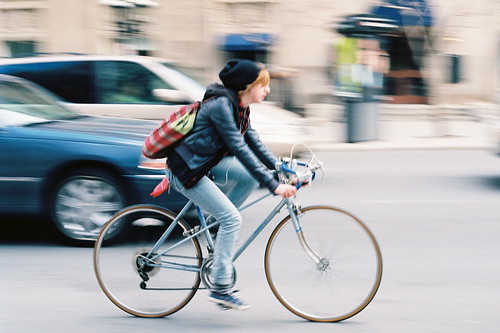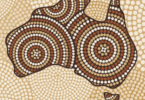

Cyclist by Gigantic Robot is licensed under a Creative Commons Attribution-NonCommercial 3.0 Unported License.
Poor infrastructure is preventing many Australian women from cycling, a new survey has revealed.
The ‘Women and Cycling 2013’ survey, conducted by the National Heart Foundation and Cycling Promotion Fund, found 60 per cent of women would like to cycle more than they do.
So what’s stopping them and why is it a problem?
Half of the 1,000 women surveyed said more bike lanes, separated cycling paths and wider lanes on the roads would encourage them to cycle more.
Many women felt safety concerns discouraged them from cycling. The key concerns reported were the speed and volume of cars and trucks, and distracted drivers.
Gabriella Corbo-Perkins, a Melbournian cyclist, said drivers often fail to consider the danger they pose to cyclists.
“It seems like cars forget that I’m just a person on a bike, and they’ve got a one tonne piece of metal around them. If they hit me, I’m going to die. If I hit them, they’re probably going to be fine.”
Diana Heggie, the Victorian CEO of the National Heart Foundation, said current cycling facilities need improvement to encourage more people to choose healthy modes of transport.
“The design of some of our cities and towns doesn’t actually encourage the uptake of physical activity”, she said.
“There’s no doubt that physical inactivity is a significant factor for poor health.”
Where to from here?
Last week, the federal government announced all future federally funded infrastructure projects must consider bicycle paths when planning, as part of the Nation Building Program.
Cycling Promotion Fund Spokesperson Stephen Hodge supported the government’s announcement.
“It’s much easier, when you’re putting in a new piece of infrastructure, to tack on a bit of provision for people to be able to ride… either beside or on the new piece of infrastructure”, he said.
The National Cycling Strategy 2011-16 aims to double the number of people cycling by 2016.
Mr Hodge thinks getting more women cycling is the key to achieving this goal.
“Women are so under-represented in the cycling transport figures. If we can find a way of getting more women cycling, we have a chance of achieving this target. If we don’t focus on what women want, we have no hope.”
The ratio of female to male cyclists is increasing in some metropolitan areas, with Melbourne’s inner suburbs seeing the biggest rise.
Want to gain a more local perspective?
Two young Melbournian cyclists, Gabriella and Maxine shared their views on the issues associated with cycling. You can listen to the interviews here.






